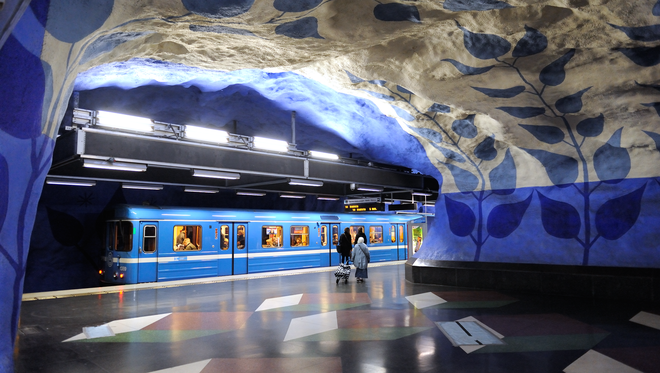Most Americans are in support of public transit, but 3% use it to commute.
The COVID-19 pandemic took a massive toll on public transit, as commuter buses and trains were nearly empty during the early months of the pandemic. Passenger fares and other transit agency revenue dropped by 30% between 2020 and 2021. The federal government intervened, spending more than $69 billion in relief funds – five times the amount spent on public transportation in 2019, according to the Congressional Research Service.
This action saved thousands of jobs in an industry that employees more than 430,000 workers, according to American Public Transportation Association.
Although a majority of Americans are in support of public transportation and passenger rail, the share of people who use public transit everyday to commute to work is miniscule: 3.1%, to be exact.
Part of the reason that percentage is so small is because close to half of all Americans have no access to public transportation.
Here's a breakdown of public transit ridership and how Americans utilize transit:
How do people get to work?
The most recent year of commuter data shows that 3.1% of Americans used public transportation to travel to work. A majority of Americans drive alone to work. That percentage has been relatively consistent for the past decade up until 2020 when the pandemic shifted many jobs online.
According to the American Community Survey, in 2019, 75.9% of workers drove alone to work, compared to about 67.8% in 2021.
Although the rate increased slightly in 2022, it is significantly less than the share of Americans driving alone to work prior to the pandemic.
Carpooling was the second most common method of commuting to work between 2010 and 2019.
Between 2019 and 2021, the rate dropped from 8.9% to 7.8% in 2021.
Working from home was relatively uncommon until 2020. By 2022, it was the second most common response to the ACS commuting survey, behind driving alone.

Public transit ridership declined after the pandemic
About 70% of public transit commuters in the U.S. live in one of the following metro areas:
- Boston
- Chicago
- Los Angeles
- New York
- Philadelphia
- San Francisco
- Washington, D.C.
Public transit ridership took a sharp decline after the COVID-19 pandemic and has yet to bounce back to pre-pandemic numbers.
The New York metro area has the most public transit commuters of any other U.S. metro area. Between 2019 and 2022, commuter ridership dropped by 700,000. A similar trend affected the Washington, D.C. metro area.
The number of transit commuters in 2022 was less than half of total commuters in 2019, according to the American Community Survey.
What occupations are popular among public transit riders?
Of the small portion of daily commuters who used public transit, a quarter were employed in education, health care or social service industries.
About 13% of public transit commuters worked in arts, entertainment, and food services.
Those working in armed forces had the smallest share of public transit commuters, with less than 1% representation.
Disclaimer: The copyright of this article belongs to the original author. Reposting this article is solely for the purpose of information dissemination and does not constitute any investment advice. If there is any infringement, please contact us immediately. We will make corrections or deletions as necessary. Thank you.





